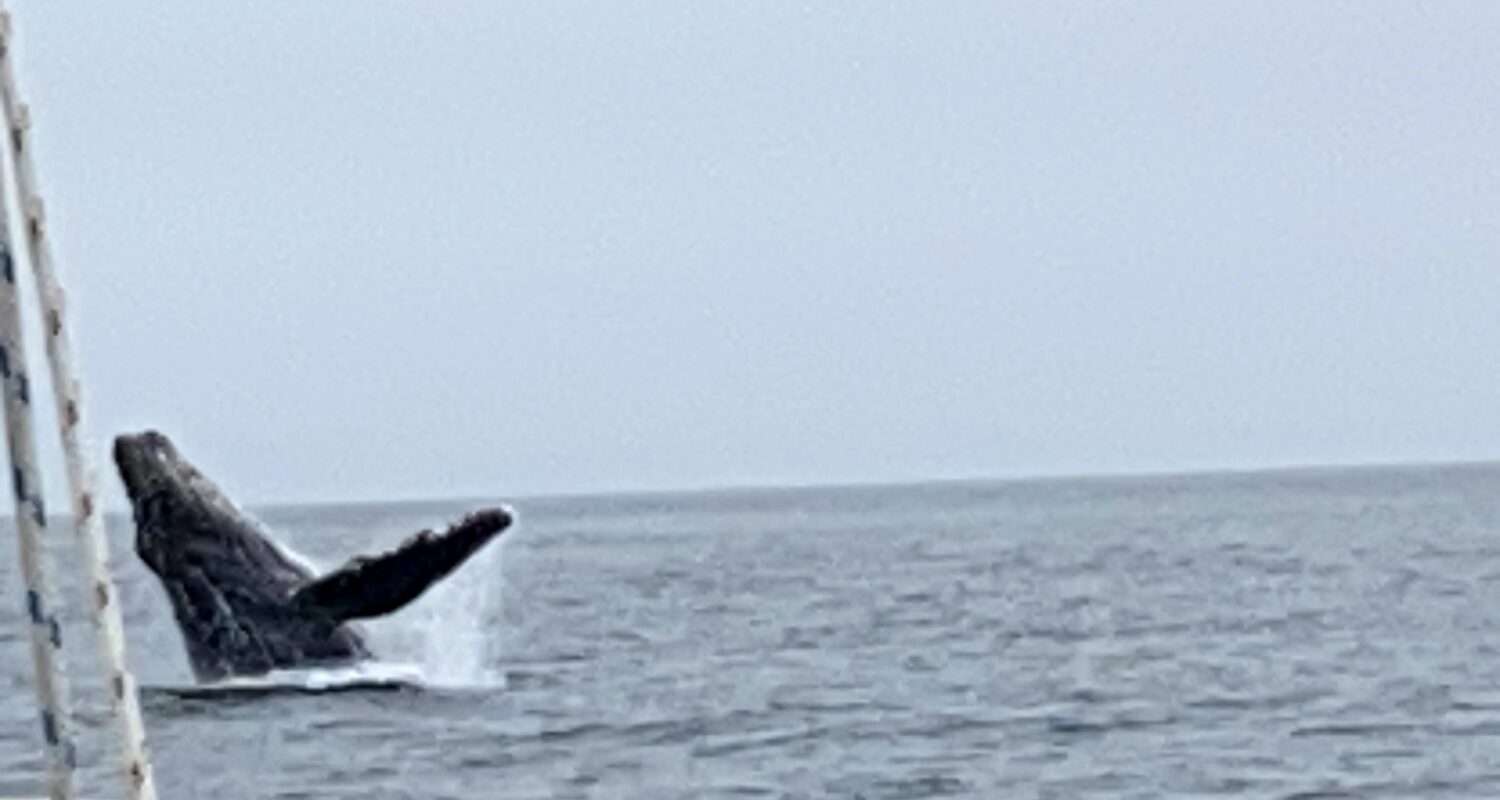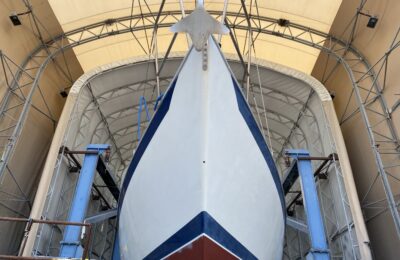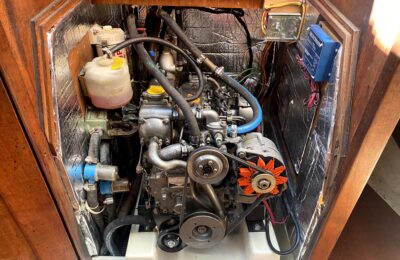California offers coastal visitors only a few island-visiting opportunities. Los Angeles has the lovely Catalina group, Santa Barbara is near the Channel Islands, but from the San Francisco Bay, we have only the Farallon Island archipelago. Located 25 miles off the Golden Gate the Farallones are wonderful for seal recreation, shark procreation, and seabird defecation. Not a good place for a wine mixer, but a destination nonetheless.
The wave forecast was for 2’ foot swells at (every) 13 seconds. That sounded alright. The wind forecast was poor. As an SF Bay sailor it is easy to assume that the wind is always blowing off the coast of California, but that is not true at all. The macro wind forecast websites seem to vastly underestimate the wind strength inside the Golden Gate. I expected to do some motoring to make the round-trip in a day.
I was en-route before 8am with a low ceiling of fog blanketing the bay on a gentle ebb tide.
Wind inside the slot was 10-15 kts, enough that I could set up the Aries Wind Vane and let it steer the course for a while.
Once I had passed the line between Mile Rock light and Point Bonita, the wind faltered substantially and I shook all of the reefs out of the Yanmar Engine. It thrummed along.
My Raymarine wheel pilot has been giving me problems with a sporadic “Drive Not Found” error, suggesting a loose connection between the pilot and the networks. I have been over the junctions several times and not found an explanation. The frustrating part is that sometimes the pilot will work happily for 4-5 hours and then the network will suddenly declare that the pilot has disappeared.
For the morning at least, the engine and the pilot cooperated and pushed me out toward the Farallones. I set a waypoint south of the Farallones on my plotter and created a ‘route’ and then let the boat take itself there. I thumbed a copy of a Yachting Magazine someone had left at my marina. The sky was overcast and there were a handful of recreational fishing boat bobbing around.
Lots of bay porpoises and sea birds. The Farallones are protected as a Marine Reserve and there was plenty of evidence of a thriving ecosystem on the way out. Not knowing how long it would actually take me to get there, I decided I would turn around upon arrival or 1pm, whichever came first.
As luck would have it, the Raymarine/Yanmar version of sailing had me at my waypoint off the main island right around 1pm. The place seems as advertised, mostly a rock with lots of sea life.
I turned around and headed back. On a windier day this would be the fun part, running more with the typical NW wind pushing me home. But instead, it was more motoring. Around 1:15pm the wheel pilot decided it had worked enough for the day and crapped out. Hand steering.
I had seen a couple of whale flukes on the way out, but sure enough, I got a bit more of a show later on. I don’t know if this guy was courting my Ericson or threatening it.
He was pretty close though. What is that, a humpback?
Hand steering. Diesel thrum.
I should add that this little trip was the first time I have been entirely without visual reference on the water. For several hours there was only a gray horizon all around. I had my fancy GPS and plotter map of course, but with those powered down, the need to steer to a specific bearing becomes a real issue. I suppose I gained a new appreciation for my elderly Ritchie compass.
The wind was puffing somewhat from the south, and from the west, 0-5 knots.
Earlier this year I purchased a used “Cruising Asymmetric Spinnaker” from Minnie’s sail loft in Southern California. I haven’t had much chance to test it, given my recent stay in the boatyard, and the fact that a summer afternoon with 20 knots of wind on the sometimes crowded San Francisco Bay hasn’t seemed like a good scenario for an inexperienced soloist with a flakey autopilot to test things out.
But you know, I got bored coming back from the Farallones, so I figured I would do the careful thing, the right thing, and try out my new spinnaker when I was 12 miles offshore, out of sight of land and by myself. (That’s sarcasm, but really having no one else around and 4 kts of wind maximum is a scenario I seldom find on the bay). I had safety jacklines and a harness and clipped in for all of my work out of the cockpit.
My new asymmetric spinnaker came with an ATN “Sock” and a “Tacker” allowing the kite to be gybed around a furled jib. I watched a few videos about how to raise and lower the sail. This guy’s process made sense to me:
In essence, to set the asymmetric spinnaker with a sock:
-The sheet car should be on the outboard track before you begin.
-You attach/fix the three corners of the sail, (tack, clew, head) and hoist the sail (knowing which side of the boat the sail should be on.)
-You pull up the sock and ‘poof’ out blooms your spinnaker. Trim to taste.
It took me some doing, but poof, I had my first look at my “nearly new condition” Doyle asymmetric sail in action. I think it’s a tad small for my boat, but at purchase I figured I would rather have one a wee bit too small than too large given my level of experience
I poked along for a while, practicing my steering, but there just wasn’t enough wind to justify dropping the speed to 2-3 kts from my motoring clip of 5.5 kts. Can’t be too late for dinner or you get in trouble.
To retrieve the sail with the chute the steps are:
-De-power the sail by releasing the tack or the clew.
-Pull the sock back down over the sail.
-Lower the halyard, shove the sail back in the bag.
This all worked for me. An easy retrieval and good times. I hope to find another opportunity to use the sail in slightly heavier conditions (8-10kts?) especially once I have my wonky wheel pilot sorted out a bit better. Adding a pole would be a logical step I suppose.
Motor, motor, motor. Returning to the bay, once I breached the magic line between Mile Rock and Pigeon Point, the wind picked right back up, I shut down the motor, and I scooted around the corner to Sausalito with a spicy 15-20 knot following wind.
Back in the slip by 6:30pm, about 11 hours round trip.



